- 07736 104738
- sam@medicalmassagelady.com
- Mon - Sat, 8:00 - 18:30
Pregnancy
I have seen so many posts about the pelvic floor muscles which give false information and which give women false hope. I have seen posts saying that kegel exercises do not strengthen the pelvic floor, that surgery is not needed for incontinence issues associated with weak pelvic floor muscles, and that seem to show other forms of stretching, eg. yoga, pilates as some kind of miracle cure for incontinence.
As a nurse who has worked in gynaecology and sexual health, and as a midwife who has held antenatal classes and seen first hand the contributing factors to a weak pelvic floor and stress incontinence, I feel it’s important to share evidence based, factual information. Pelvic floor weakness affects 25% of women, and failure to treat appropriately can cause severe pain and further damage requiring surgery, so I advise any women, or men, having issues with incontinence or weakened pelvic muscles, to consult with their GP.
THE PELVIC FLOOR:ANATOMY & FUNCTION
Pelvic floor muscles and related connective tissue attach the pubis of the sacrum to the pelvis, and form a hammock, which spans the area below the pelvis.
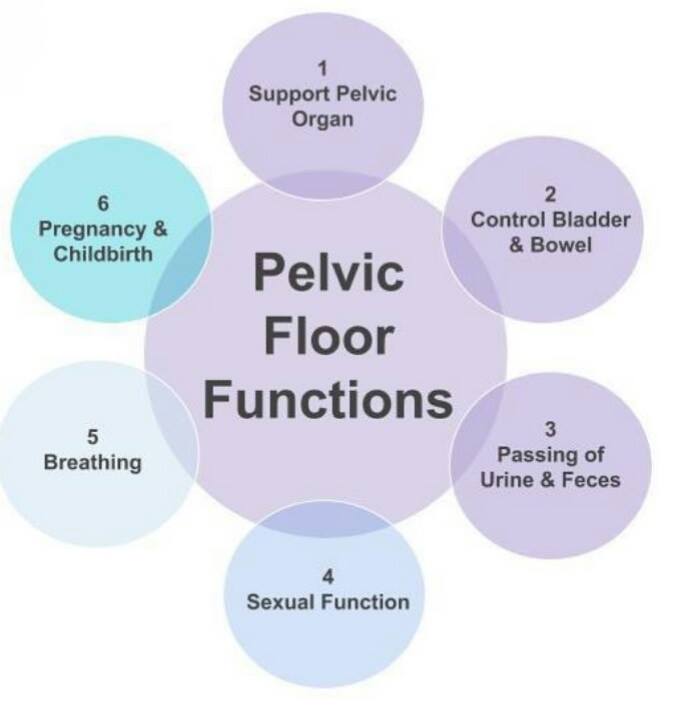
FUNCTIONS:-
• separate the pelvic cavity above, from the perineal region below
• support pelvic organs (bladder, intestines and uterus)
• circular sphincters assist in urinary and faecal continence
• aid in sexual performance • supports the growing uterus and baby during pregnancy
• stabilise connecting joints
• work with abdominal and back muscles to support and align the spine
• act as venous and lymphatic pumps for the pelvis
Hormonal changes cause your tissues and muscles to soften and become stretchy, in order to accommodate your growing baby and to prepare for birth. Stress incontinence in late pregnancy can be common due the pressure from increased weight and the softening and stretching of the muscles due to hormonal changes.
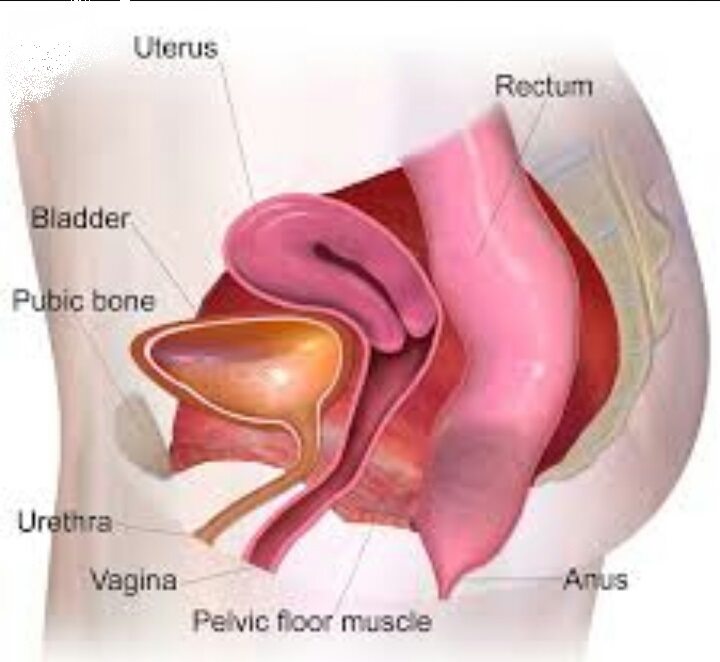
CAUSES/RISK FACTORS FOR A WEAK PELVIC FLOOR
Unlike other muscles in the body, the pelvic floor cannot be strengthened through traditional exercises, and some high impact exercises can even damage the pelvic floor, so the cause of your weak pelvic floor should be identified to find the best treatment.
Contributing factors include:-
• age – older women have a higher risk as all muscles begin to weaken with age. Kegel exercises are proven to strengthen the pelvic floor, and reverse age related weakening They may resolve mild pelvic prolapses
• pregnancy - pregnancy hormones soften and stretch the pelvic muscles, sometimes past its rebound level. Combined with the weight of the growing baby, the muscles loosen and may allow the prolapse of the pelvic organs • previous/multiple pregnancies
• vaginal childbirth - in the most straightforward delivery there will be some damage to the pelvic floor muscles. The pelvic floor stretches up to three times its normal length in labour
• complicated/traumatic delivery- forceps, episiotomy, perineal tears(particularly 2nd or 3rd degree tears) Scar tissue and weakened abdominal muscles from a caesarean section can also contribute to pelvic dysfunction
• previous mild prolapse, not surgically treated
• large babies
• menopause – reduced oestrogen leads to a weakened pelvic floor
• constipation - frequently constipation and straining places unnecessary pressure on the pelvic floor
• delayed emptying of bladder - holding urine until ready to burst can strain the bladder or cause an atonic bladder, affecting the ability to hold urine in properly
• emptying the bladder when it isn't full – trains the bladder to hold reduced amounts of urine, increasing your urge to go when you don’t have a full bladder. This can develop into urge incontinence
• squatting over the toilet – due to fears about germs, activates the pelvic muscles which prevents your bladder and bowels from fully emptying, which can weaken the pelvic floor and encourage urinary tract infections
• surgery - pelvic surgery, especially a hysterectomy, can cause a degree of damage to the pelvic floor and increase the risk of a prolapse
• high impact exercise – eg.in running and cross fit where the feet land heavily on the ground, the vibrations can cause damage to your pelvic floor
• heavy lifting – regularly lifting heavy weights or lifting incorrectly can strain the pelvic floor
• genetics
• smoking and chronic coughing – due to lung conditions or smoking, may strain and weaken pelvic floor muscles
• pelvic tumours
• overweight - being overweight places added pressure on the pelvic floor • high sugar intake – may potentially reduce the elasticity in muscle fibres
• bowel dysfunction- eg. Chrohn’s, Coeliac, irritable bowel syndrome (IBS), and chronic constipation significantly increase pelvic floor dysfunction
• low back pain – affects up to 80% of people and a significant percentage of these also have pelvic floor dysfunction due to overuse of other muscles to compensate.
• trauma/anxiety – the pelvic floor tightens in response to trauma and anxiety which becomes a problem if it never relaxes due to trauma
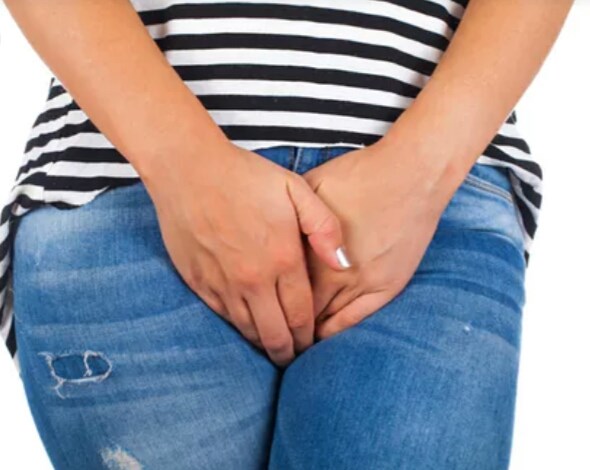
SYMPTOMS OF A WEAK PELVIC FLOOR
• urinary and faecal incontinence
• urinary frequency and/or difficulty passing urine
• constipation and a feeling of not having fully emptied the bowel
• pelvic instability
• pelvic prolapses - involving the bladder, rectum and vagina
• a feeling of pressure inside the vagina, and/or a dragging feeling that something is going to fall out (usually due to prolapse)
• noticeable protrusion from the vagina, may be painful and bleed (due to prolapse)
• vaginal bleeding • discomfort/pain during sex and/or loss of feeling/tightness during sex
• an excessively widened vagina, (tampons don’t stay in place)
• weakened abdominal muscles
• low back pain
• pelvic pain which eases when lying down but worsens with standing
• issues during pregnancy and in future pregnancies
• persistent or frequent urinary tract infections
USE OF YOGA AND PILATES IN STRENGTHENING THE PELVIC FLOOR
There is no doubt that pilates and yoga exercises can minimise the risk of pelvic floor injury and strengthen the surrounding muscles, eg. the spine, helping to reduce lower back pain which has been linked to pelvic floor weakness. If your pelvic floor is in good condition and you are not at increased risk of pelvic floor weakness, then these exercises will be a good preventive measure. However, these core exercise programs can encourage or worsen existing pelvic floor issues such as incontinence, prolapse or pelvic pain, despite a normally functioning pelvic floor. It can do this by:-
• overloading the pelvic floor through strong contraction of the abdominal muscles, which can generate increased downward pressure onto the pelvic floor, which if unable to withstand, is forced downwards itself. Over time this causes stretching and straining of the pelvic floor and worsening of existing problems
• exercises involving sustained activation of core muscles including pelvic floor muscles, without learning to relax them, increases pelvic floor muscle tension and promotes overactive pelvic floor muscles
SELF MASSAGE FOR THE PELVIC FLOOR
Treatment options for pelvic floor weakness include kegels, squats, physical therapy & probably the most undervalued option for tightening the muscles… massage. When the pelvic floor muscles tighten due to vaginismus, trauma or urge incontinence appears, pelvic floor massage can improve blood flow & lymphatic circulation & relax the tissues of your pelvis.
HOW TO DO PELVIC FLOOR MASSAGE:
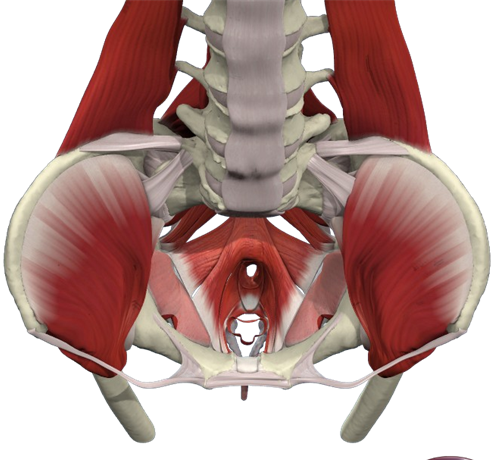
Imagine vaginal opening as a clock, with 12 at the top & 6 at the bottom opposite anal sphincter. For pelvic floor massage, work your way from 3-9 on the clock, ideally in the evening.
· lie down on your back, with knees propped up, allow your pelvis to be in neutral position
· using lubricant/coconut oil hydrate & moisturize the vaginal opening
· use your index & middle finger to work the outside of vagina, & your thumb to work the inside at a slight angle
· work your way around the underlying muscle tissue, using thumb in downward strokes towards 6 o’clock
· create pressure/ release approach to different points inside of your vagina, using circular motion & identifying tender points or any muscle tension
· work up towards 9 o’clock
· spend 10 minutes investing motion, suppleness & hydration in all tissues surrounding the vagina
Self massage on the pelvic floor helps improve suppleness, motion & relaxation.
INTERNAL PELVIC FLOOR THERAPY
Difficulties in the pelvic area eg. groin pain, pain during sex, frequent urges to urinate and incontinence can be embarrassing, but may result from medical conditions or childbirth. Even men should look after their pelvic floor, to help maintain the health of pelvic organs, such as the prostate, but nobody ever talks about the male pelvic floor. Sometimes treatment doesn't seem to work and we may labelled with conditions such as pelvic pain syndrome or vulvodynia. If you still have symptoms despite using conventional treatments, you may want to try internal pelvic floor therapy, which works on the fascia, which can become twisted due to injury, bad posture or tension. This can reduce flow of blood and lymph, and affect the nerves. By relaxing the fascia, blood and lymph flow to muscles and organs is restored, and the nervous system works more effectively. Myofascial pain treatments must be carried out by someone who is qualified and knowledgeable of the trigger points in this area. Internal trigger points and external trigger points work the same way, and when internal trigger points in the vagina and rectum are released, symptoms such as pain and urinary frequency can stop.
An internal pelvic floor therapist examines trigger points which affect organs such as the bladder and prostate and gently stretches the connecting muscle to release tightness. This can result in someone being able to have pain free sex, or to sleep all night without needing the toilet. It can also assist with recovery of the pelvic tissues after childbirth, and ease pain in the lower back and abdomen.
Kegel exercises and other self-treatments will be advised alongside this therapy.
MASSAGE AND KEGEL EXERCISES FOR PELVIC FLOOR WEAKNESS THE MALE PELVIC FLOOR
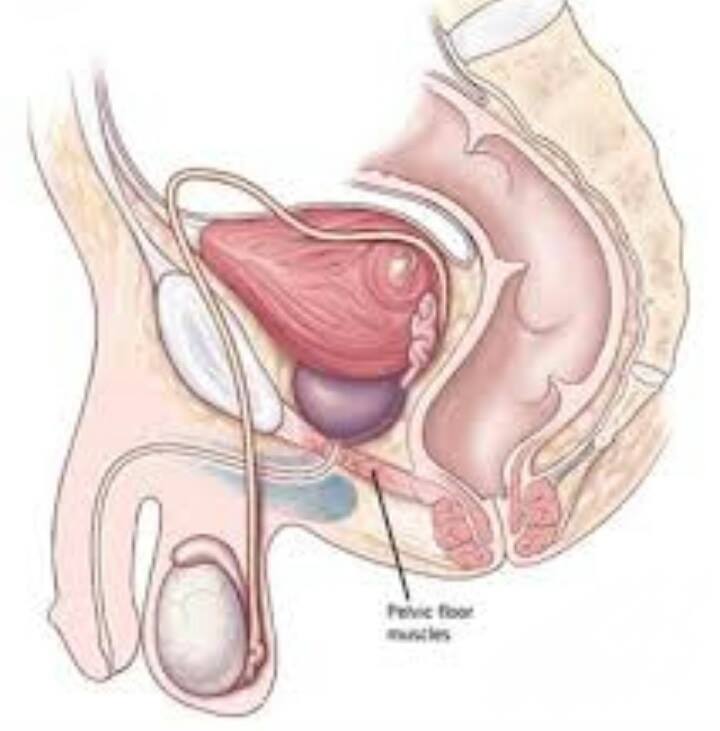
Kegel exercises were developed by a gynaecologist in the 1940s to relax the pelvic muscles and improve urinary incontinence and pelvic pain caused by muscle weakness. An internal massage technique was also developed pre World War II, by Dr. Thiele to treat prostate pain caused by pelvic floor problems in men. Conditions such as Benign Prostatic Hyperplasia (prostate enlargement) and Chronic Prostatitis / Chronic Pelvic Pain Syndrome (CP/CPPS) can cause various symptoms including:-
• painful urination
• irritation of the bladder
• urinary urgency and frequency
• urinary hesitancy and slow stream
• dribbling of urine
These symptoms can be due to excess tension, weakness, or other dysfunction in the pelvic floor muscles and associated trigger points. Massage to the pelvic floor and abdominal muscles, combined with kegel exercises where appropriate, can improve these symptoms.
KEGEL EXERCISES
Kegel exercises are simple exercises that strengthen the pelvic floor muscles surrounding the vagina, bladder, penis and rectum, by clenching and releasing the ‘hammock’ which holds the pelvic organs in place. Kegel exercises can be done anywhere and will benefit both men and women. In women, these exercises help to prevent incontinence, sexual problems and prolapse of the pelvic organs which may result from pregnancy, childbirth, ageing, and weight gain. In men they also help prevent age related weakening of the pelvic floor muscles, as well as incontinence which is often linked to prostate problems.
KEGELS FOR WOMEN
• identify the right set of muscles by placing a clean finger inside your vagina and tightening the muscles around your finger or by trying to stop urine mid flow. Regularly contract and release these muscles. • do not regularly do Kegels by starting and stopping your urine flow as it can promote incomplete bladder emptying and urinary tract infections • do not do Kegel exercises when you have a full bladder
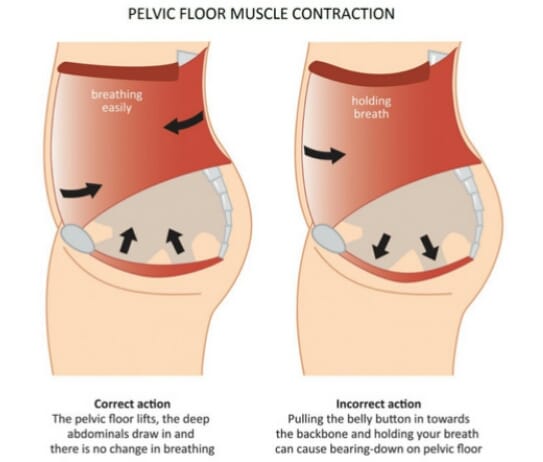
KEGELS FOR MEN
• identify the right muscles by inserting a finger into the rectum and squeeze it with the muscles without tightening the abdomen, buttocks, or thighs. These are the same muscles that contract to refrain from passing gas. Alternatively, practice by stopping the flow of urine.
KEGEL TIPS:-
• always empty the bladder before doing Kegel exercises
• initially, tense the muscles for a count of three, then relax for a count of three. Repeat 10 times.
• practice until you can tense the muscles for a count of 10, aiming to do three sets of 10 repetitions daily
• it may take a few months to benefit urinary incontinence
• Kegel exercises work differently for each person, and even if little improvement is noted, they will still help to prevent worsening of your condition
• if you're pregnant/planning to get pregnant, you can initiate pelvic floor exercises straight away to reduce the risk of incontinence after childbirth
• strong pelvic floor can increase sensitivity during sex and promote stronger orgasms for women and reduce the symptoms of erectile dysfunction in men
CAUTIONS
• Abdominal or back pain after doing Kegel exercises means they are not being done correctly - as you contract your pelvic floor muscles, the abdominal/ back/ buttock muscles should stay relaxed
• don’t overdo Kegel exercises as they will become tired and unable to function properly




